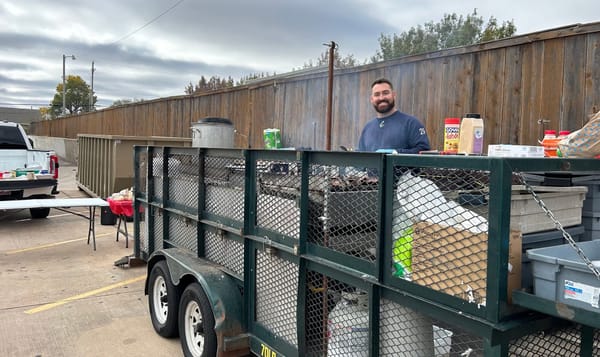How a lack of pet resources in rural Texoma communities contributes to the stray crisis

Across parts of Oklahoma and Texas there is a notable problem with the number of stray pets and an inadequate amount of resources to address the issue. In part, this can be traced to irresponsible pet owners – people simply unfit or unwilling to commit the time, money, and effort to care for these animals. However, it can also partly be attributed to these areas being largely made up of rural communities that simply lack the rescue, veterinarian, and lost-and-found efforts to address the problem.
Larger cities tend to have many more options for getting affordable pet care and help, finding a shelter with the means to do intakes, and various ways to locate lost pets such as chip readers, lost-and-found groups, or simply more places to hang flyers. Rural communities don’t always have the means to supply these options, resulting in restricted ability to help. Athena Nielipinski, the founder of Fishy’s Friends Rescue based in Lawton, has been actively trying to provide these resources where she can.
“We currently have 8 microchip scanners installed in rural community locations. They’ve made a significant impact by giving residents and small-town officials twentyfour seven access to scan found pets. In several cases, this has led to same-day reunions without animals ever having to enter an already overburdened shelter system. It’s also increased community awareness about the importance of microchips and keeping registrations current,” Nielipinski said.
Further, for rural communities that do have these resources available or are near larger cities that do, they’re not always accessible or affordable to all those in the area. In addition, Nielipinski pointed out that rural communities with active military personnel, such as Altus, are likely to experience even higher numbers of pet surrenders because not all active military know their options with pets or can guarantee their transfer to new places. She pointed out that while the PCS reimbursement program for pet transport was reinstated, many service members aren’t being informed about it.
“Rural areas often lack access to low-cost spay and neuter programs, affordable vaccination clinics, and veterinary services in general. There’s also a gap in public education on responsible pet ownership and fewer programs providing basic pet supplies to struggling families,” Nielipinski said.
On top of all that, oftentimes rural communities have a more old-fashioned way of thinking about such issues. While there are certainly always members of any community that are passionate about helping with animal rights issues, there are also those that grew up in environments where animals are viewed as commodities or a means of assisting in making a profit. With this way of thinking, if an animal is deemed as no longer having value, the result is often getting rid of the animal in some form or another. This can look like selling the animal by whatever means necessary, surrendering the animal, or even dumping it.
“Rural dumping is also more likely because enforcement is limited — city animal control has no jurisdiction, county enforcement is often underfunded, and the chances of being caught are far lower compared to within city limits,” Nielipinski shared.
These dumped animals are oftentimes then brought to shelters that don’t have room for them. Even in bigger cities like Lawton and Wichita Falls, shelters are overrun, resulting in them having to make difficult decisions like turning animals away, or worse. In the last year, Lawton Animal Welfare has held multiple events where adoptions were offered at reduced prices in an attempt to lower numbers. Wichita Falls has done the same.
Currently, there is a Clear the Shelters event taking place through the month of August that spans across hundreds of shelters within the nation with the goal of helping to relieve shelters and find homes for pets. Several cities in Texas and Oklahoma are partaking in the event, including Duncan, Ardmore, Bowie, and Wichita Falls. A full map of the cities involved in the event can be found on their website at https://www.cleartheshelters.com/.
While non-profit organizations and no-kill shelters have a positive impact, they often can barely scrape the surface of the greater issue. This is especially evident in rural communities which generally have one to two animal shelters or rescues, and sometimes none at all. When there is nowhere for these animals to go, that’s when people tend to turn to extreme alternatives.
That said, there are options for addressing the issue even in rural areas. It often comes down to communities coming together with the common goal of providing outlets for resources, providing transportation to cities with such resources, or simply committing the time to catching strays and fostering them or finding available shelters that can take them on.
“If pet owners consistently microchipped their animals, kept ID collars on them, spayed and neutered, and vaccinated, it would significantly reduce accidental litters and lost pet numbers. Expanding low-cost vet care in rural areas, improving community education, and creating volunteer pet resource teams to assist with trapping, scanning, and outreach could make a substantial impact. Involving local businesses, schools, and civic groups in these efforts could help bridge the resource gap,” Nielipinski concluded.




